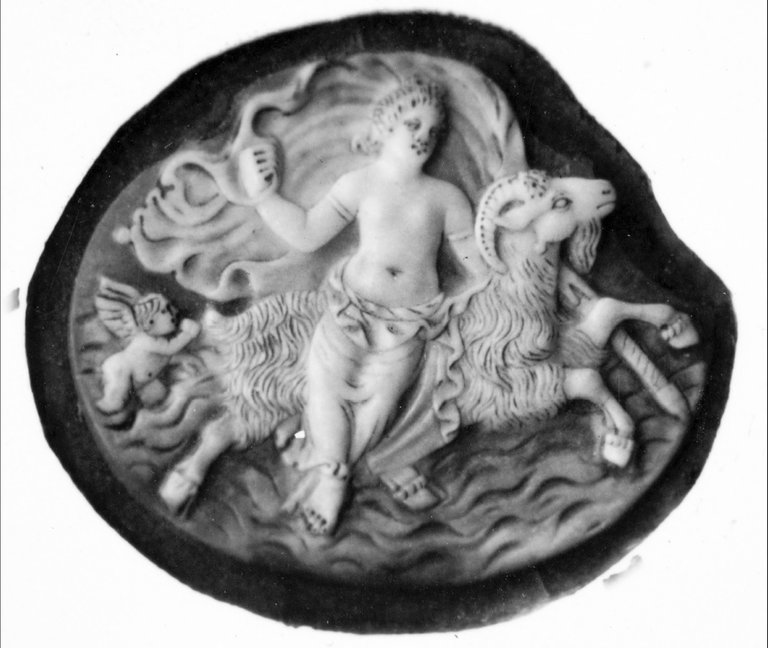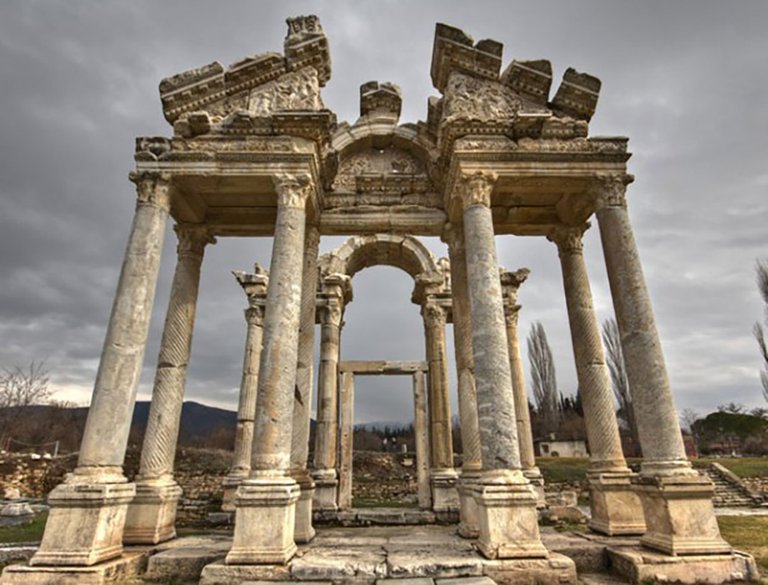Later, after being destroyed by earthquakes, the Sebasteion was used as a shopping center. After the city was destroyed more and more with the time and covered by floods with earth, they built on her the houses of the village "Geyre". In this village lived until 1960 people - so to speak, between the ruins of Aphrodisias.
When Prof. Erim wanted to start his excavations in 1960, the inhabitants of the village Geyre first had to be relocated to a new Geyre village in a nearby village. In addition to a small theater, the Odeon, in which 1000 people had space, there was a big theater. It was built in 27 BC by the ruler Zoilos as a foundation for Aphrodite and the citizens of the city (as can be seen from an inscription on the stage building).
The theater was built by eroding the acropolis hill. During the excavations, the lower part of the rows of seats and the ground floor of the stage building were unharmed. The stage building is the oldest three-story stage building in all of Anatolia. It is built in the Doric, Ionian and Corinthian style. In niches were large statues of which, for example, those of Apollo were found. Inscriptions on the northern stage wall report special rights granted to the city. Here, too, the importance of the city at that time becomes clear. After the Christianization of the city, the words Aphrodisias and Aphrodite were scratched out In the semicircular Orkestra bullfights and gladiatorial competitions were held at the time of Marcus Aurelius (161-180). For these fights, the lower rows of seats were dismantled for safety.
The theater also suffered tremendously during the later earthquakes. The upper, destroyed part of the theater was leveled. Later, the hill on which the theater is located was leveled for a fortress and the theater used as a dump.
The theater included the Theaterbad. The "Apoditerium" (changing room), the "Caldarium" (warm part) and the "Sudatorium" (sweat room) have already been excavated, but a large part of the bath is not yet visible. The stadium is the best preserved building in the city and one of the most important ancient buildings in the world. It is Egyptian in shape and can seat 30,000 people. The 22 rows of seats were placed on the sloping vaults, which were then stores and storage depots. The auditorium was entered through tunnel-shaped entrances.
The stadium was mainly used for athletic sports events and later as an arena. If necessary, the plebiscites were held there. The Aphrodite Temple is the city's most important building. It was built in the 1st century BC in the Ionian style typical of Anatolia. The 14 huge pillars are still standing.
In the sacred part of the temple, which was separated from the rest of the temple by a monumental entrance building, was the cult monument to the goddess Aphrodite.


Nice, educative post. Just like going back to school, but this time historical stories like this is actually fun to read.